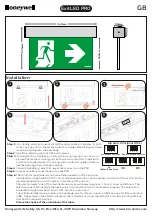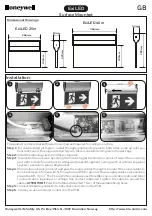
DL.2 User Manual
35
Chapter 4:
DMX Programming Basics
If you are new to DMX programing, this chapter will give you a brief overview
and tips on programming DL.2 fixtures with Wholehog consoles from High End
Systems.
DMX Programming Overview
DMX512 Links
A lighting console typically utilizes a protocol called DMX512 to communicate with automated
lighting fixtures and conventional dimmers. This protocol consists of 512 unique channels of
control per output link (universe). Typically a lighting fixture or device will use a channel for
each parameter’s function. Each channel consists of 256 values ranging from 0 to 255. The
lighting console is programmed to transmit a corresponding DMX value for the desired
function of each parameter. All DMX values are stored within in the lighting console, and
typically are referred to as cues, scenes, or presets. A lighting console locates a fixture on the
link by it’s DMX Start Channel.
Determining a DMX Start Channel
The DMX Start Channel is the first channel of a fixture’s channel range on a DMX link. There
are 512 available channels on each DMX universe divided among all the devices in a particular
universe. A fixture must have a unique DMX Start Channel number in order to respond
independently to controller commands.
To determine each fixture’s DMX Start Channel, identify the footprint of every fixture on the
universe. The fixture’s footprint is the number of consecutive DMX channels a fixture requires
and is determined by the channels in the fixture’s protocol.
The fixture’s DMX channel range must not overlap any other device’s channel range on the
link. When two devices on the same DMX universe have overlapping channel ranges, one or
both devices will be disabled or behave erratically.
8-bit vs. 16-bit DMX Parameters
Most parameters of an automated light use one channel of DMX providing 256 values of
control (0-255). This is known as 8-bit DMX. Although most DL.2 parameters use 8-bit DMX,
several require a more accurate range of values than can be provided with a single DMX
channel.
Summary of Contents for DL.2
Page 20: ...xx DL 2 User Manual...
Page 24: ...CHAPTER 1 Product Overview 4 DL 2 User Manual...
Page 54: ...CHAPTER 3 The DL 2 Menu System 34 DL 2 User Manual...
Page 58: ...CHAPTER 4 DMX Programming Basics 38 DL 2 User Manual...
Page 62: ...CHAPTER 5 Graphics Engine Overview 42 DL 2 User Manual...
Page 70: ...CHAPTER 6 Graphic Functions Defining Content 50 DL 2 User Manual...
Page 82: ...CHAPTER 7 Graphic Functions Rotation Position Scale 62 DL 2 User Manual...
Page 138: ...CHAPTER 11 Effect Mode Options Descriptions 118 DL 2 User Manual...
Page 168: ...CHAPTER 14 Content Management Application CMA 148 DL 2 User Manual...
Page 188: ...CHAPTER 16 Restoring the System 168 DL 2 User Manual...
Page 238: ...APPENDIX A DL 2 DMX Protocol 218 DL 2 User Manual...
Page 246: ...APPENDIX D DL 2 Specifications 226 DL 2 User Manual...
Page 252: ...APPENDIX E Safety Information 232 DL 2 User Manual...
















































